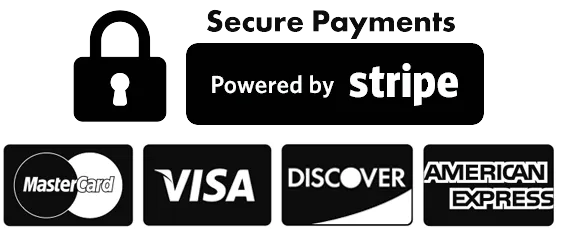Product Info
Zoomind is a dietary supplement that contains a unique complex of phosphatidylserine, L-Tyrosine, and Omega-3, specially formulated to promote clarity and focus.
Limit three bottles per order.
Recommended Dosage: 2 capsules daily (2 in the morning or 1 in the morning and 1 in the evening)
US$70.00
| Quantity | Unit Price |
| 1 | US$70.00 |
| 2 + | US$60.00 |
** Free Shipping on all quantities (USA Only)
Zoomind is a dietary supplement that contains a unique complex of phosphatidylserine, L-Tyrosine, and Omega-3, specially formulated to promote clarity and focus.
Limit three bottles per order.
Recommended Dosage: 2 capsules daily (2 in the morning or 1 in the morning and 1 in the evening)
What is Zoomind?
Zoomind is a dietary supplement designed to boost the intake of essential proteins that are beneficial for children and adults with Attention-Deficit/Hyperactivity Disorder (ADHD). Zoomind comes in 60 capsule bottles.
Recommended dosage is two capsules daily.
What’s in it?
Each capsule contains omega-3 polyunsaturated fatty acids (PUFAs), L-tyrosine and phosphatidylserine in the following proportions:
L-Tyrosine is a precursor to dopamine and some other neurotransmitters that are involved in the regulation of attention and mood. Evidence suggests that supplementation with L-tyrosine may enhance cognitive performance and attention in stressful or demanding situations.
Phosphatidylserine is a structural component of brain cells (neurons) that can help enhance communication. It is required to produce neurotransmitters such as dopamine, which is involved in learning, memory, and mood. Dopamine deficiency is believed to be one of the primary triggers for ADHD.
Polyunsaturated fatty acids (PUFAs) – particularly eicosapentaenoic acid (EPA) and docosahexaenoic acid (DHA) – are essential omega-3 fatty acids. Deficiencies in omega-3 fatty acids are often observed in children with ADHD. Some studies suggest that omega-3 supplementation may positively impact ADHD symptoms, such as inattention, hyperactivity, and impulsivity.
Phosphatidylserine and PUFAs are connected in a few ways. Imagine it as a puzzle – some of the pieces of phosphatidylserine are PUFAs. This helps brain cells stay flexible and communicate better. Both of these special fats help the brain work better. Phosphatidylserine helps brain cells communicate with each other, while PUFAs keep the brain healthy by fighting off anything that might damage it.
Since phosphatidylserine and PUFAs help the brain in different ways, scientists think they might work well together to help people with ADHD, which means that taking them together might be even better than taking them alone.
Dosage and Delivery
Zoomind comes in capsule form.
Dosage: Recommended dose is two capsules daily with food.
Capsules can be opened and sprinkled on yogurt or apple sauce if swallowing is an issue.
If the daily dose has not been taken, the missing dose can be supplemented the next day (up to a daily dose of 4 capsules).
Always consult your doctor before taking Zoomind, especially if you (or your child) take other prescription medication.
How Zoomind Works
The American Psychiatric Association recommends that every diet (kids and adults) should include fatty fish, like salmon and tuna — two or more times a week. They also recommend that people with “impulse control disorders,” like attention deficit hyperactivity disorder (ADHD), supplement their daily diets with at least 1 gram of fish oil. The reason: Omega-3 fatty acids help brains function better.
Omega-3 deficiencies are often associated with ADHD in children. Zoomind is rich in omega-3 fatty acids and phosphatidylserine both associated with boosting brain power.
Zoomind provides a pure source of essential fatty acids that the body needs for a wide variety of functions. Just about every aspect of neurotransmission — the movement of information from brain cell to brain cell — is affected by omega-3s. Our bodies can’t produce omega-3 fatty acids on its own. Zoomind is specially designed to boost the volume of omega-3 fatty acids to the body.
Zoomind is an over-the-counter natural health product designed for adults and children.
Zoomind is a dietary supplement that contains a unique complex of phosphatidylserine, L-Tyrosine, and Omega-3, specially formulated to promote clarity and focus.
Action of Zoomind
60% percent of the brain is composed of fat. Our brains depend on a steady supply of dietary fat for its health and wellbeing. Essential fatty acids (EFA) are the building blocks of fat. Fatty fish and fish oil supply two of the most important essential fatty acids for your brain: EPA, or eicosapentaenoic acid; and DHA, or docosahexaenoic acid – both EPA and DHA are Omega-3.
Omega-3 boosts the body’s supply of dopamine, which is required for neurotransmission. Many of the prescription medicines for ADHD also target dopamine production, which is essential for the brain’s functions of cognition, memory and focus.
Phosphatidylserine is a fatty substance that protects nerve cells in the brain and enables them to communicate with each other. The nutritional supplement phosphatidylserine promotes cognitive function and memory.
Researchers have identified exactly what makes the oil in cold-water fish the best source – it contains optimum levels of omega-3-rich sources. These nutrients are brought to you in easy to digest capsules and are specially formulated with the addition of phosphatidylserine and L-Tyrosine. All of Zoomind’s ingredients contain essential components for the production of neurotransmitters which help nerve cells communicate and influence mood.
Summary
Zoomind is a non-prescription dietary supplement formulated to promote clarity and focus and support symptoms of ADHD. Zoomind is not a drug or a stimulant, and is non-addictive. Zoomind is a safe, natural, dietary supplement that supports the treatment of ADHD by utilizing compounds that are familiar to the body.
* These statements have not been evaluated by the Food and Drug Administration.
These products are not intended to diagnose, treat, cure, or prevent any disease.
Contact Us
Connect with us here
Or, send an email to:
[email protected]
OTC supplements you can trust
We value your privacy and are committed to protecting your personal data. This Privacy Policy explains how we collect, use, and safeguard your information when you visit our website.
©2023 Reekooz.
All Rights Reserved.
